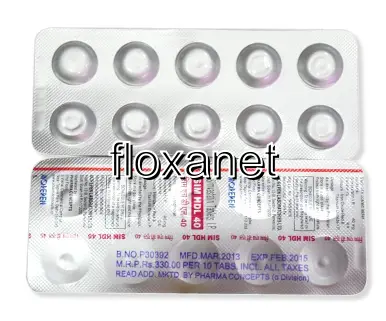| Package | Dosage | Price | Price per Dose | |
|---|---|---|---|---|
| Dosage: 5mg | ||||
| 180 pill | 5mg | NZD337.46 | NZD1.88 | |
| 120 pill | 5mg | NZD233.81 | NZD1.95 | |
| 90 pill | 5mg | NZD185.59 | NZD2.07 | |
| 60 pill | 5mg | NZD137.38 | NZD2.29 | |
| 30 pill | 5mg | NZD81.94 | NZD2.75 | |
| Dosage: 10mg | ||||
| 360 pill | 10mg | NZD737.63 | NZD2.05 | |
| 180 pill | 10mg | NZD378.44 | NZD2.10 | |
| 120 pill | 10mg | NZD255.50 | NZD2.12 | |
| 90 pill | 10mg | NZD202.47 | NZD2.24 | |
| 60 pill | 10mg | NZD149.43 | NZD2.48 | |
| 30 pill | 10mg | NZD84.35 | NZD2.82 | |
| 10 pill | 10mg | NZD33.72 | NZD3.40 | |
| Dosage: 20mg | ||||
| 360 pill | 20mg | NZD1,214.93 | NZD3.37 | |
| 120 pill | 20mg | NZD419.42 | NZD3.50 | |
| 90 pill | 20mg | NZD337.46 | NZD3.74 | |
| 60 pill | 20mg | NZD243.45 | NZD4.07 | |
| 30 pill | 20mg | NZD132.56 | NZD4.41 | |
| 10 pill | 20mg | NZD48.19 | NZD4.75 | |
| Dosage: 40mg | ||||
| 180 pill | 40mg | NZD1,002.80 | NZD5.57 | |
| 120 pill | 40mg | NZD703.88 | NZD5.86 | |
| 90 pill | 40mg | NZD561.65 | NZD6.24 | |
| 60 pill | 40mg | NZD407.37 | NZD6.80 | |
| 30 pill | 40mg | NZD226.57 | NZD7.52 | |

Simvastatin Description
Overview of Simvastatin
Simvastatin is a widely used medication in the treatment of high cholesterol and lipid disorders. It belongs to the statin class of drugs, which work by inhibiting an enzyme involved in cholesterol production in the liver. This action helps lower Low-Density Lipoprotein (LDL) cholesterol, often referred to as "bad" cholesterol, and can increase High-Density Lipoprotein (HDL) or "good" cholesterol. By managing these lipid levels, Simvastatin plays a crucial role in reducing the risk of cardiovascular diseases, including heart attacks and strokes.
How Does Simvastatin Work?
Simvastatin functions by blocking the enzyme HMG-CoA reductase, which is essential for cholesterol synthesis in the liver. When the enzyme is inhibited, the liver produces less cholesterol. As a result, the body responds by increasing the clearance of LDL cholesterol from the bloodstream. This process helps to improve overall lipid profiles and can contribute to the stabilization of arterial plaques, lowering the risk of blockages that can cause severe cardiovascular events.
Benefits of Using Simvastatin
Many patients experience significant benefits from taking Simvastatin. It effectively reduces LDL cholesterol levels, which is considered a primary target in managing cardiovascular risk. In addition, Simvastatin can modestly increase HDL cholesterol levels and lower triglycerides. Its use is often recommended alongside lifestyle changes, such as diet and exercise, for a comprehensive approach to lipid management. Patients with a history of cardiac issues or risk factors for vascular disease particularly benefit from this medication.
Possible Side Effects
Like all medications, Simvastatin may cause side effects in some individuals. The most common adverse effects include muscle pain, weakness, and gastrointestinal disturbances such as nausea or constipation. In rare cases, it can lead to more severe conditions like rhabdomyolysis, a breakdown of muscle tissue that can affect kidney function. Liver enzyme elevations may also occur, necessitating regular monitoring during therapy. Patients should inform their healthcare provider about any unusual symptoms or persistent side effects.
Precautions and Interactions
Simvastatin requires careful use in certain populations. Patients with liver disease or undefined elevations in liver enzymes should avoid or use it cautiously. It is also important to review other medications being taken, as Simvastatin can interact with drugs like certain antibiotics, antifungals, and other lipid-lowering agents. These interactions can increase the risk of side effects, especially muscle problems. Pregnant or breastfeeding women are advised to avoid this medication, as its safety during pregnancy has not been established.
Usage and Dosage
The prescribed dose of Simvastatin varies depending on individual health conditions and cholesterol levels. It is typically taken once daily in the evening, with or without food. Healthcare providers may start with a lower dose and gradually increase it to achieve the desired cholesterol reduction while minimizing side effects. Regular follow-up appointments are essential to monitor progress and adjust the dosage if necessary.
Conclusion
Simvastatin remains a cornerstone in lipid management for many patients at risk of cardiovascular disease. It is a well-studied medication with proven benefits in lowering LDL cholesterol levels. While it has some potential side effects, careful monitoring and proper medical guidance can help maximize its safety and effectiveness. Patients are encouraged to adhere to prescribed instructions and maintain healthy lifestyle habits alongside medication use for the best outcomes in heart health management.
